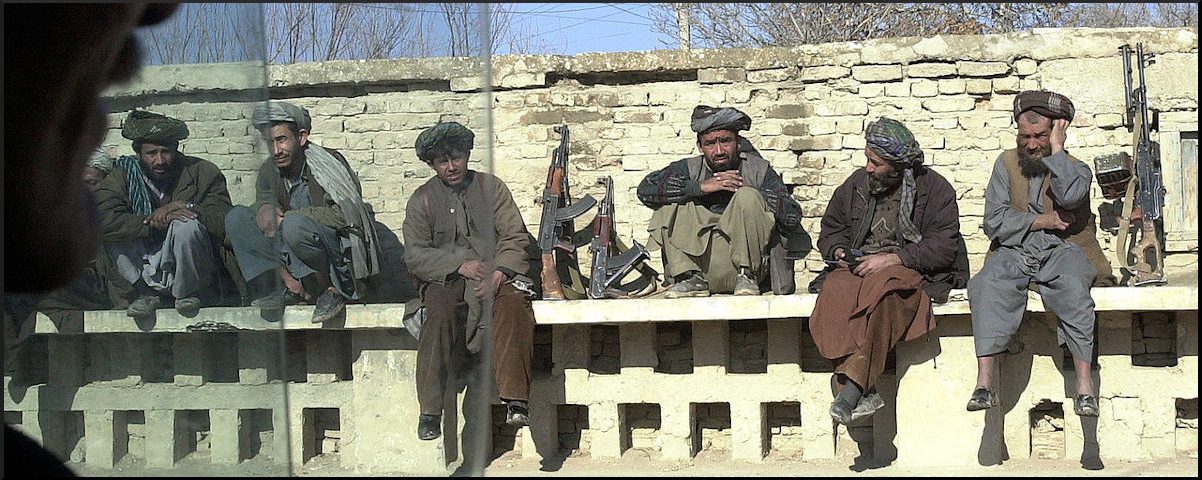by Austin Dewey, published on Fightback News!, August 3, 2021
Biden has been portraying the drawdown of U.S. troops as a sign of victory in Afghanistan, but the truth is that resistance forces are winning. In describing the motivations behind the drawdown, Biden stated, “We went to war with clear goals. We achieved those objectives. Bin Laden is dead, and al-Qaeda is degraded in Iraq – and in Afghanistan.” However, the story on the ground is different. The puppet government set up by the United States has very little popular support and the U.S.-backed military forces have no will to fight.
Although the war in Afghanistan was originally portrayed as a response to the September 11, 2001 terrorist attacks in the U.S. and to take military action against al-Qaeda, the priorities of the U.S. occupation shows that the goal was to install a pro-U.S. government that would support the U.S.’s economic and military ambitions in the region. Afghanistan has been an important nexus for trade for centuries, an intersection between Iran, China, India and countries to the west. Multinational corporations also want access to the estimated $1 trillion of mineral wealth that exists in the country.
In the early years after the invasion, the majority of the funds that poured into the country went to buy military equipment and create infrastructure for the U.S. occupation forces. The goal was never to help the people of Afghanistan, it was to subjugate them and make Afghanistan a launching pad for further U.S. military adventurism in the region.
This lack of popular support for the occupation shows up even when the CIA-affiliated Asia Foundation think tank publishes opinion polls. In one recent poll, 80% of Afghans said they feel fear when encountering the international occupation forces. Biden recognized this missing popular support when over 200 collaborators were evacuated from Afghanistan and Biden said, “Welcome home.” Since the evacuees have spent at least part of the last two decades assisting the foreign occupation forces, they aren’t welcome in their own country anymore.
Militarily, the U.S.-backed puppet government holds a dwindling number of provinces and population centers. The Taliban claims to control 85% of the territory of Afghanistan, and there is a constant stream of reports of the U.S.-backed Afghan National Army laying down arms instead of fighting. This year, the amount of territory that the Taliban controls is estimated to have doubled, as the U.S. occupation government has no popular support and its troops recognize that they are heading to defeat.
The past experience of U.S. meddling and interference in the world show that its influence doesn’t lead to more rights for the average people; but for a small wealthy elite it helps funnel resources to multinational corporations. The only just solution is the removal of the U.S. occupation.
While the U.S. has poured $2 trillion into the war effort, the Afghan people haven’t seen any benefit from this; they’ve only seen their country destroyed and ravaged by bombs, paramilitary groups and mountains of military equipment. China is offering an alternative path for the Afghan people. While the U.S. plans to withdraw, China is developing infrastructure projects as part of its Belt and Road Initiative. The Belt and Road Initiative is a global infrastructure development strategy encompassing over 70 countries to grow global trade. The terms and agreements of the Belt and Road Initiative stand in stark contrast to the neoliberal demands of the World Bank and IMF and represent a serious challenge to U.S. and European dominance globally.
We can look at past U.S. military invasions and see what the U.S. does when it is defeated. It moves towards economic and political maneuvers to isolate and hurt the people that defeated them. The economic and political development of Afghanistan can only begin with the full withdrawal of all U.S. troops and private military contractors.
*Featured Image: Northern Alliance troops under General Dostum’s command in Mazar-e Sharif take a break on a wall in the median of the town’s busiest street This image or file is a work of a U.S. Air Force Airman or employee, taken or made as part of that person’s official duties. As a work of the U.S. federal government, the image or file is in the public domain in the United States.
